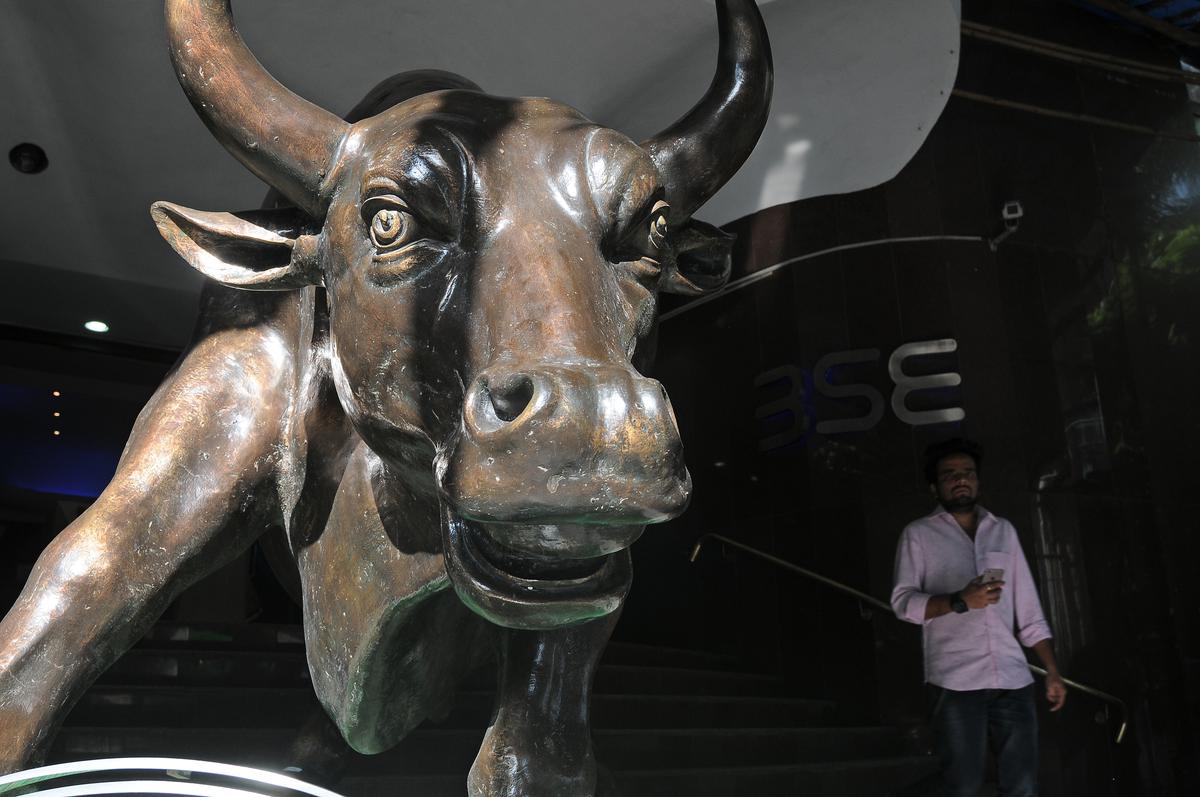
Markets continue to rally for 4th consecutive day in early trade
The Hindu
The 30-share BSE Sensex climbed 382.43 points to 59,343.03 in early trade. Similarly, the broader NSE Nifty advanced 98.45 points to 17,585.40.
Equity benchmark indices made a firm start on Wednesday, rallying for the fourth day running, helped by buying in HDFC twins and a largely firm trend in global markets.
The 30-share BSE Sensex climbed 382.43 points to 59,343.03 in early trade. Similarly, the broader NSE Nifty advanced 98.45 points to 17,585.40.
From the Sensex pack, HDFC, HDFC Bank, Power Grid, Larsen & Toubro, Titan, Axis Bank, Mahindra & Mahindra, NTPC and UltraTech Cement were the prominent winners in early trade.
HCL Technologies, State Bank of India, Infosys, Sun Pharma, Bajaj Finserv were among the laggards.
Among other Asian markets, Seoul and Tokyo traded in the green, while Shanghai and Hong Kong quoted lower.
Wall Street ended higher on Tuesday.
There are two factors supporting the ongoing rally in the market - support from the mother market US aided by some excellent quarterly results and FII selling getting completely overwhelmed by DII (Domestic Institutional Investors) buying, said V. K. Vijayakumar, Chief Investment Strategist at Geojit Financial Services.

The Union Budget unveiled on February 1, 2025, has come at a time of unprecedented global uncertainty and a flagging domestic economy. The real GDP growth is estimated at 6.4% for 2024-25 and between 6.3-6.8% for 2025-26, a far cry from >8 percent growth required annually to make India a developed nation by 2047. While much attention has been devoted to the demand stimulus through income tax cuts, not enough is said about the proposed reforms in urban development, tariff rationalisation, and regulatory simplification aimed at making Indian cities and corporates more competitive. Since the majority of economic activity is located in cities (urban areas account for ~55% of GDP) and produced by large corporates (~40% of the national output and 55% of India’s exports), the above-mentioned reforms have a pivotal role in improving India’s trend growth rate. Below we unpack each reform.












